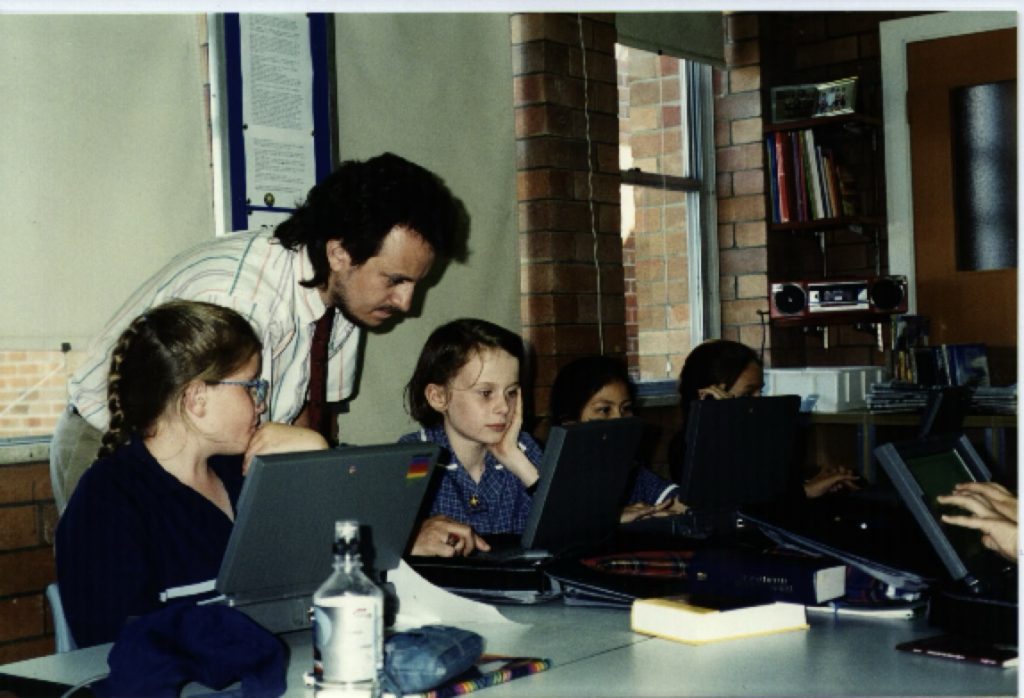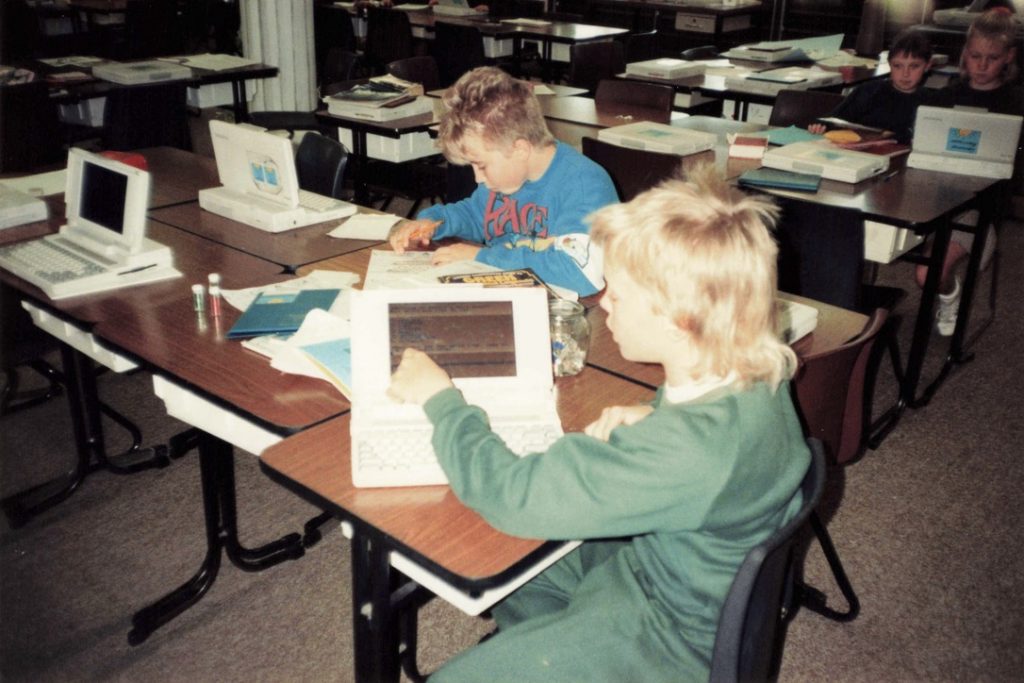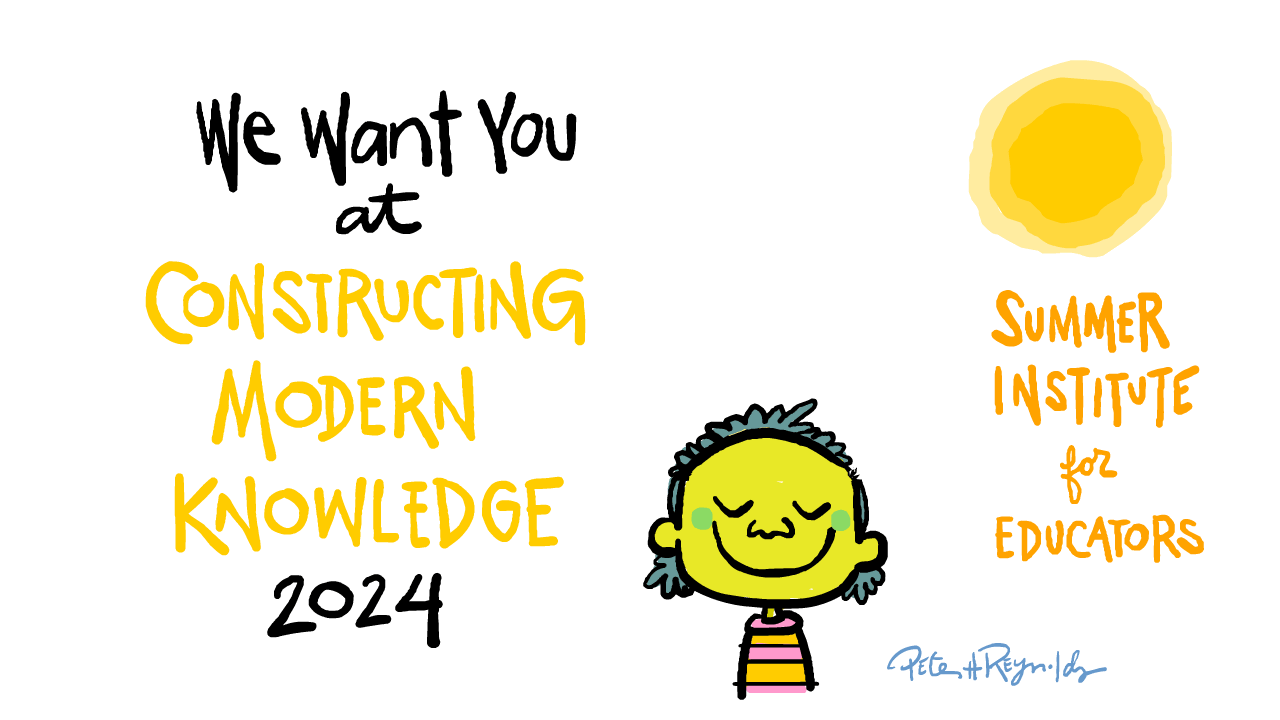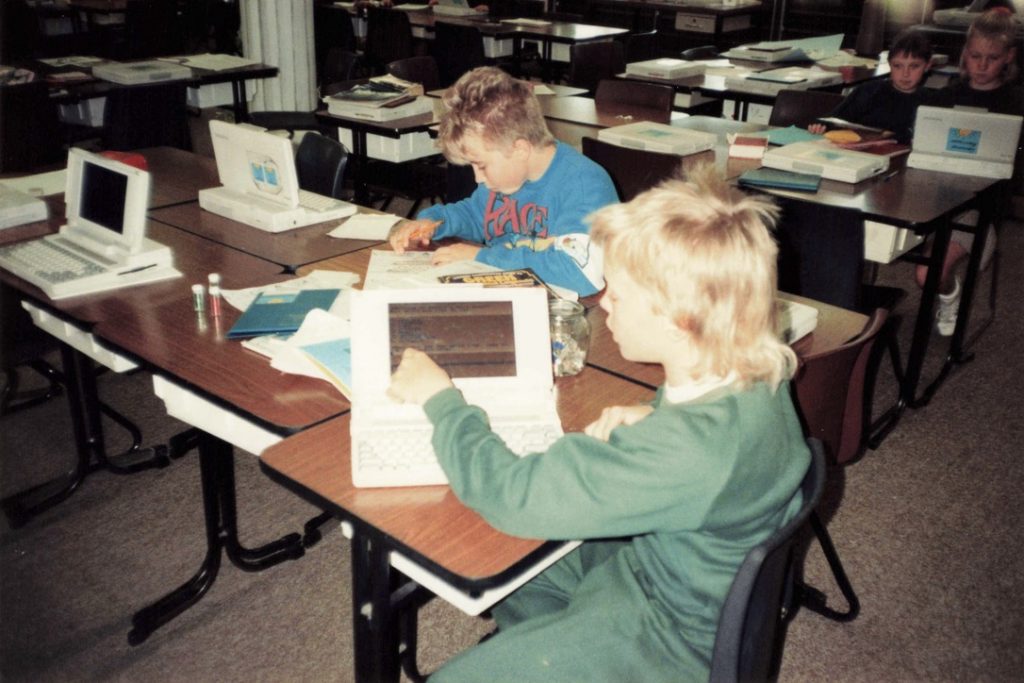Note: A growing collection of archival documents and books related to the history of 1:1 personal computing in schools may be found here.

My story…
I dreamt of visiting Australia since I read This is Australia as a third grader in my suburban New Jersey public school. That dream was realized two decades later when a paper I wrote was accepted for inclusion in the proceedings of the World Conference on Computers in Education (WCCE) in Sydney, Australia in July 1990. Not only did I have a reason to visit Australia, but what seemed like minutes after learning of my paper’s acceptance, I received a letter from an organization I never heard of before or since, offering to sponsor my trip.
On top of all that, I would be joined in Sydney by legendary educators and friends, including Brian Silverman, Tom Lough, Dan Watt, Molly Watt, Alan Kay, Steve Ocko and his co-inventor of LEGO robotics, Mitchel Resnick. Seymour Papert would be staying in the adjacent hotel room. The conference was a heady experience culminating in Seymour Papert’s stunning closing keynote, Perestroika and Epistemological Politics, a speech that may be even more relevant today.
Before the conference commenced at the brand new Darling Harbor Convention Centre, I attended a workshop with local educators and students from the first two schools in the world where each student had their own personal laptop computer. I had already been working in educational computing for close to a decade and I didn’t have my own laptop. During the multi-day workshop, I worked with a year seven girl to build a working LEGO fax machine and met a number of wonderfully crazy Australian educators who were in the midst of changing the world. I shared my admiration for their efforts to realize Seymour Papert and Cynthia Solomon’s 20 Things to Do with a Computer vision at scale and shift from a traditional teacher-centric educational system to a learner-centered model of constructionism.
Then it happened! I was invited to return to Australia the following month to help teachers at the world’s first two “laptop schools” reinvent education.








At the time (1990) the stated policy of the Queensland government was that by 1991, every student in Queensland would have a personal laptop computer. My allegiance to public education led me to suspend my disbelief and imagine that the public model in Queensland would prevail. So, on my return visit to Australia, I began my work mentoring three teachers and their three classes of students at Coombabah State Primary School to find ways to solve problems, be creative, and express themselves across the curriculum while programming in LogoWriter. The next stop on my tour was a residency at Methodist Ladies’ College Kew in Melbourne. Due to the courage, creativity, and leadership of their principal David Loader and his phenomenal teaching staff, history remembers MLC as the birthplace of truly personal computing in schools. (The history of 1:1 personal laptop computers in education has been memorialized in memos, books, and doctoral research, much of it freely available here.)

Over the next several years, I spent a great deal of time in-residence at MLC where I was trusted to do anything I thought would benefit the school. I refined my skills mentoring teachers in their own classrooms, led workshops, contributed to publications, created what became extremely successful holiday computing camps, and organized a star-studded international Logo conference in 1993. That work begun at MLC led to invitations to lead professional development and residencies in dozens of independent schools across Australia, as well as collaborations with the ACT and several state departments of education. The achievements of pioneering Aussie schools in the early 90s may have come as close as any to realizing the vision of Seymour Papert and Cynthia Solomon’s groundbreaking paper, Twenty Things to Do with a Computer. Students and teachers alike created projects demonstrating a new level of complexity and sophistication.
The invention and successful implementation of 1:1 laptop personal computing in schools was Australia’s gift to the world.
It should be celebrated and serve as a great source of pride.
One day I mentioned to MLC Principal David Loader that his teachers were parroting his talking points about constructionism, but had no point of reference for breathing life into those ideals in their classrooms. David asked, “What do you suggest?” I responded that we needed to create a distraction-free context where educators could take off their teacher hat, put on their learner hat, and enjoy the luxury of time to work on personally meaningful projects. Only such personal experiences held the key to making classrooms more productive contexts for learning. David replied, “FInd a venue and take thirty or so teachers away for three days.” That model of what began being referred to as “Pyjama Parties” was so successful that we ran several at MLC. I led similar institutes at other Aussie schools, most notably Sydney’s Pymble Ladies’ College one infamous long weekend in Bundanoon. Other residential learning adventures open to educators from across Australia were offered at Geelong Grammar in subsequent years.

David Loader, OAM



If you removed the fact that David Loader committed to every student in his school owning a personal laptop computer in 1989 and that nearly every teacher in his school taught computer programming across the curriculum, David Loader would remain one of the most courageous, provocative, visionary, and consequential school principals in history. He too was honored by Queen Elizabeth with the Order of Australia Medal for his contributions to education. Following his tenure as Principal of Methodist Ladies’ College, David was Principal of Wesley College, the largest coeducational independent school in the Southern Hemisphere. One of David Loader’s books, The Inner Principal – Reflections on Educational Leadership, remains one of the boldest and most candid books ever written about school leadership. He is my friend, mentor, sparring partner, and hero. That’s why I am thrilled David will be at his second Constructing Modern Knowledge institute!
Stephen Costa



Not only is Steve Costa (now retired) a great classroom teacher and primary school administrator, but he is literally Patient Zero when it comes to 1:1 computing in schools. If you or your students have a laptop to use in the classroom, you can thank Mr. Costa. In 1989, Steve put his hand up and volunteered to teach a class of fifth graders in which each of the students would have a laptop. Not only that, but for the next three decades, Steve demonstrated how open-ended computational environments, like Logo/LogoWriter/MicroWorlds/LEGO robotics could be used to bring the curriculum to life, increase collaboration, and amplify the potential of every learner.
Veteran educator Gary Stager, Ph.D. is the author of Twenty Things to Do with a Computer – Forward 50, co-author of Invent To Learn — Making, Tinkering, and Engineering in the Classroom, publisher at Constructing Modern Knowledge Press, and the founder of the Constructing Modern Knowledge summer institute. He led professional development in the world’s first 1:1 laptop schools thirty years ago and designed one of the oldest online graduate school programs. Gary is also the curator of The Seymour Papert archives at DailyPapert.com. Learn more about Gary here.


